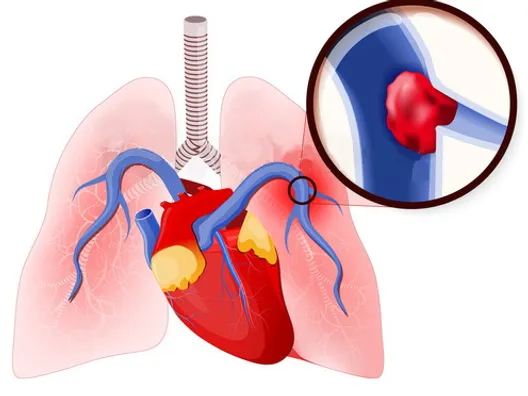The arteries, veins, and lymph vessels that bring blood to the heart and body are vital for healthy circulation. When they become damaged or abnormal, this is called vascular disease.
Some vascular diseases may affect only one part of the artery or vein and others can occur anywhere in the body. Some vascular diseases are life-threatening, while others can be treated with medication or surgery.
Peripheral Artery Disease
Peripheral artery disease, or PAD, is a condition that causes the narrowing of blood vessels in the body other than the heart and brain.
When the arteries become narrowed, less blood can travel to your legs, arms, or kidneys.
Symptoms include pain or tightness in your leg when you walk. They can also include a burning sensation or aching pain that worsens when you rest.
These symptoms can be mild or severe, depending on how much a person’s arteries have narrowed. If left untreated, peripheral artery disease can lead to nonhealing skin sores (claudication) or areas of dead tissue called gangrene.
Early detection is important so that treatments can be started before the disease becomes severe enough to cause complications like a heart attack or stroke. Our team of vascular experts has the skills needed to diagnose, treat and prevent PAD and other complex vascular diseases.
Carotid Artery Disease
Carotid artery disease (also known as carotid artery stenosis) is caused by a buildup of plaque (atherosclerosis) inside the arteries, which restricts blood flow to the brain. This can lead to a stroke, which is a medical emergency that can result in permanent disability or death.
Early-stage carotid artery disease usually does not cause any symptoms, but can be discovered when your doctor listens over your neck with a stethoscope during a checkup and hears an abnormal sound called a bruit. The noise is a reflection of turbulent blood flow that may indicate narrowing or blockage of the artery.
Depending on the severity of the blockage, medical treatments such as angioplasty and stenting can help widen your carotid arteries and increase blood flow to the brain. These procedures also may reduce your risk for a future stroke.
Pulmonary Embolism
A pulmonary embolism occurs when a blood clot forms somewhere else in the body and travels to the lungs. Small pulmonary embolisms may cause no symptoms, while large ones can be life-threatening and can lead to chest pain and shortness of breath.
At Yale Medicine, our dedicated team of experts provides extraordinary expertise in a variety of treatment options for pulmonary embolisms. The treatment depends on the type of clot and how it is blocking blood flow to the lungs.
They are most commonly heparin and warfarin, but other types of anticoagulants are available.
The underlying causes of a pulmonary embolism are complex, and a comprehensive evaluation is necessary to determine the best approach to treating this condition. At Yale Medicine, we have one of the country’s most experienced teams of specialists in pulmonary embolism and are at the forefront of cutting-edge research to advance the management of this life-threatening vascular disease.

Vascular Malformations
Vascular malformations are abnormal connections between arteries and veins that can cause problems with how blood flows in the body. Arteries carry oxygenated blood to the body’s tissues, and veins transport venous blood back to the heart.
Veins have thin walls that let cells absorb nutrients and waste products. They also collect oxygen from the lungs.
Arteriovenous malformations happen when the capillaries–tiny vessels that carry oxygenated blood from arteries to veins–are missing. This causes a kind of “short circuit” in the blood flow, which can put pressure on arteries and veins and weaken them over time.
A vascular malformation may involve any combination of blood and lymphatic vessel abnormalities. Treatment usually involves a combination of medication and surgery.









































Discussion about this post